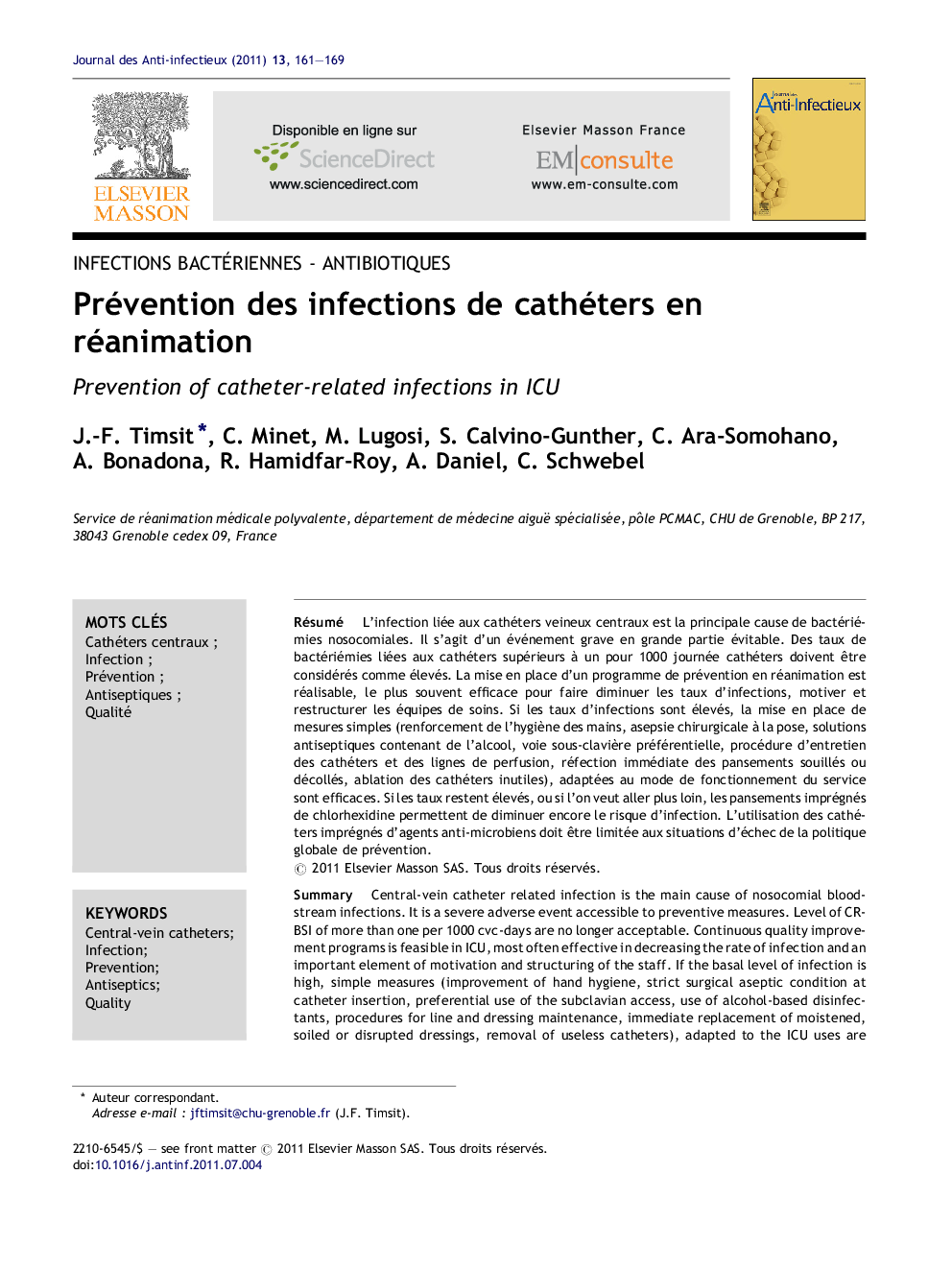| Article ID | Journal | Published Year | Pages | File Type |
|---|---|---|---|---|
| 3405383 | Journal des Anti-infectieux | 2011 | 9 Pages |
Abstract
Central-vein catheter related infection is the main cause of nosocomial bloodstream infections. It is a severe adverse event accessible to preventive measures. Level of CR-BSI of more than one per 1000 cvc-days are no longer acceptable. Continuous quality improvement programs is feasible in ICU, most often effective in decreasing the rate of infection and an important element of motivation and structuring of the staff. If the basal level of infection is high, simple measures (improvement of hand hygiene, strict surgical aseptic condition at catheter insertion, preferential use of the subclavian access, use of alcohol-based disinfectants, procedures for line and dressing maintenance, immediate replacement of moistened, soiled or disrupted dressings, removal of useless catheters), adapted to the ICU uses are effective. If the rate remains high or if we want to go below, antiseptic impregnated dressings are effective. Anti-infective impregnated catheters use should be limited to the failure of the global program.
Related Topics
Health Sciences
Medicine and Dentistry
Infectious Diseases
Authors
J.-F. Timsit, C. Minet, M. Lugosi, S. Calvino-Gunther, C. Ara-Somohano, A. Bonadona, R. Hamidfar-Roy, A. Daniel, C. Schwebel,
